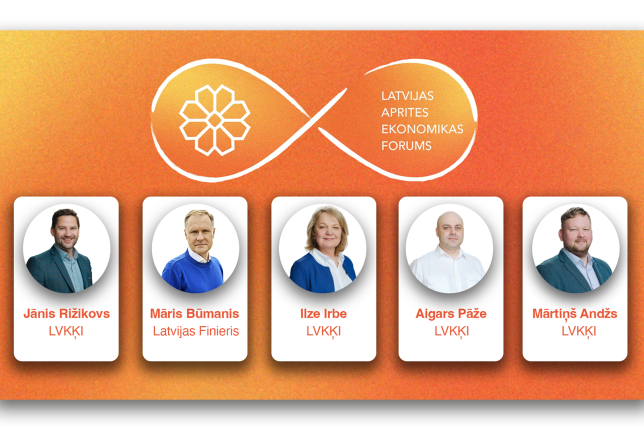From Birch Bark to the Future of Mycelium — LSIWC Session at the Latvian Circular Economy Forum

Yesterday, at the Latvian Circular Economy Forum 2025, the Latvian State Institute of Wood Chemistry (LSIWC) held a session titled “From Birch Bark to the Future of Mycelium”, where scientists together with an industry representative showcased how biotechnology and wood chemistry are transforming into tangible circular solutions.
Moderator Dr. Jānis Rižikovs opened the discussion with the thought that circularity means “seeing resources where once there were wastes or low-value by-products”, emphasizing the role of Latvian scientists in converting biological resources into high-value materials.
Dr. Ilze Irbe presented mycelium composites — materials grown from the mycelium of the Trametes versicolor fungus and lignocellulosic biomass residues. In terms of mechanical strength, thermal conductivity, and fire-reaction properties, these composites are competitive with plastic products and are capable of replacing them in the future.
Her mycelium-based materials have already gained global recognition, winning the WorldStar Winner award.
PhD Mārtiņš Andžs shared his experience from an experiment carried out together with Latvian Art Academy student Lūkass Segliņš, where they successfully grew a surfboard from mycelium — a symbol of how biotechnology can become a tool for creative thinking and design.
The second part of the session focused on birch bark as an industrial resource.
Dr. Aigars Pāže and Dr. Jānis Rižikovs spoke about the conversion of birch bark and lignin into high-value products that have laid the foundation for a new level of collaboration between science and industry.
Aigars Pāže discussed birch bark extracts rich in betulin, which are being used to develop new cosmetic ingredients and innovative creams — so-called Pickering emulsions — created by LSIWC researchers in cooperation with Latvijas Finieris and LABRAINS. Using a birch bark extraction technology developed at the LSIWC Biorefining Laboratory, these natural extracts can completely replace traditional synthetic emulsifiers, which are often harmful to human health, while simultaneously providing cosmetic formulations with additional preservative, antioxidant, and skin-healing properties.
Meanwhile, Jānis Rižikovs presented research on suberic acids — compounds that form the basis of a new natural adhesive technology. This innovation, developed in close cooperation with Latvijas Finieris, is now approaching industrial implementation. He also mentioned LSIWC’s participation in the VIOBOND project, within which Latvijas Finieris is building in Bolderāja the world’s first resin factory where fossil phenol will be replaced with lignin derived from wood.
Māris Būmanis, Member of the Board at Latvijas Finieris, emphasized that we have entered the century of the wood renaissance — an era in which wood is no longer merely a raw material for energy and construction, but a foundation for new high-value products ranging from cellulose, fuel, and chemicals to food additives, cosmetics, and pharmaceuticals.
In his presentation, Māris Būmanis showed the “Value-Added Pyramid”, illustrating how by-products of wood processing — such as birch bark and lignin — are transformed into high-value materials: betulin extract, oleogel, and suberic acids, which are used in cosmetics and bio-adhesives. Lignin obtained from wood fractionation processes replaces fossil raw materials in adhesives, while birch bark processing creates products with high export potential.
Māris Būmanis highlighted that Latvia’s wood circularity cycle is becoming increasingly complete — from using wood in construction to its re-use in new products. His closing words perfectly captured the essence of the session:
“Wood is our renewable resource, and its chemistry is our language of the future. Every new application is a step toward ensuring that no part of this resource goes to waste.”
The LSIWC session demonstrated that circular economy in Latvia is not just a vision — it is a reality born in laboratories and now forming the basis for new industries where science and business operate in harmony.
